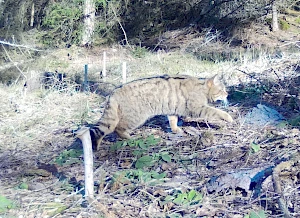Weekly review no. 8
17.11.2023
Educational agreement for bilingual high school
25 years after the start of the bilingual and binational German-Czech education branch at the Friedrich-Schiller-Gymnasium in Pirna, the education ministries of Saxony and the Czech Republic have decided on a permanent education agreement. The document was signed on November 8th by Head of Culture Wilfried Kühner and his Czech colleague, Vice Minister Jaroslav Miller.
This means that the long-standing project is now becoming a permanent institution, says the Saxon State Ministry for Culture. The agreement relates to the educational program and the boarding school. The revision resulted in a flexible, contemporary and permanent contract, which significantly strengthens the personal responsibility of the Friedrich-Schiller-Gymnasium, it goes on to say.
"With the new agreement, we are laying the foundation for long-term Saxon-Czech educational cooperation. The binational-bilingual educational program at the Friedrich-Schiller-Gymnasium is the flagship of our cross-border educational cooperation," said Kühner.
The binational-bilingual course lasts six years. It is intended for students from grade seven to grade twelve. Lessons are organized each school year in a binational-bilingual class with 14 Czech and 14 Saxon students.
Sister cities Dohna and Chlumec
It's not every day that a new partnership is formed between cities. The Saxon Dohna and the North Bohemian Chlumec (Kulm) did it. The partnership had been initiated organically over the past five years through collaboration between sports and cultural clubs. The fire departments have also been cooperating for a long time. Some of the projects were funded by the Elbe/Labe Euroregion. As the Sächsische Zeitung reports, the partnership was officially sealed in a two-page contract.
Dohna and Chlumec are separated by just 40 kilometers. Chlumec lies at the foot of the Ore Mountains and borders the district town of Ústí nad Labem (Aussig) to the northwest. The city has just over 4,000 inhabitants. Like Dohna, the city is located directly on the Dresden-Prague motorway. A monument in Chlumec commemorates the Battle of Kulm in 1813, when Napoleon's troops were defeated by the allied Russians, Austrians and Prussians.
The next exchange between the two cities will take place on November 25th, when the Dohna choir travels to Chlumec for a concert.
Does a wildcat live in Bohemian Switzerland?

What was caught by a camera trap in the Bohemian Switzerland National Park in March 2022 could be a small sensation. In the photo in daylight light, a cat sneaks through the picture. This is not an ordinary house cat. The experts are very sure that it is a specimen of a wild cat. “The typical characteristics of a wild cat are easy to recognize, such as the stripes on the fur and the size,” says Martin Valášek, zoologist at the Bohemian Switzerland National Park. Valášek is even sure that it is not a cross with a domestic cat, but a pure wild cat.
It is still unclear whether the wildcat settled in the national park or was just passing through, and if so, where it came from. In the Czech Republic, wild cats live in small numbers in the Bohemian Forest (Šumava), in the Beskydy Mountains and in the Duppau Mountains (Doupovské hory) in northwest Bohemia. The national park has the photos evaluated externally by the Agricultural University in Prague. The find has only now become known due to the large number of recordings.
The national park has now placed wooden sticks coated with valerian near its camera traps. This is a proven lure for wild cats. If the cat rubs against it, it could lose a hair of its fur, which would allow researchers to conduct DNA analysis.
Wild cats are very shy animals. They need low-disturbance forests with dead wood in which they create caves and avoid open terrain with little cover.
Karel Schwarzenberg died
The Czech Republic mourns the death of former Czech Foreign Minister and lifelong fighter for democracy and freedom Karel Schwarzenberg. The nobleman, who was known only as the "Prince" in the Czech Republic, died on November 11th in a Vienna hospital. Schwarzenberg was 85 years old.
Born in Prague in 1937, Schwarzenberg grew up in Orlík Castle in southern Bohemia in one of the richest families in Europe. In 1941 the National Socialists confiscated the Schwarzenbergs' property, some of which they got back after 1945. After the communist coup and renewed expropriation, the family emigrated to Austria in 1948. Before 1989, Schwarzenberg supported the political opposition in his home country. He was appointed office manager (chancellor) by President Václav Havel in the early 1990s. He later became a senator and was elected to parliament for the Greens. From 2007 to 2009 and again from 2010 to 2013 he was Foreign Minister of the Czech Republic. This makes him the foreign minister with the longest service to date. In 2013 he ran for President of the Czech Republic and narrowly lost to Miloš Zeman in the runoff election.
Karel Schwarzenberg was the head of the House of Schwarzenberg since 1979. The Czech government has decided to hold a funeral with state honors for Schwarzenberg. His body will be on display in the Church of Saint Mary Under the Chain (Kostel Panny Marie pod řetězem) in Prague's Lesser Town from December 6th to 8th. The funeral mass will take place on December 9th in Prague's St. Vitus Cathedral on Hradcany.
